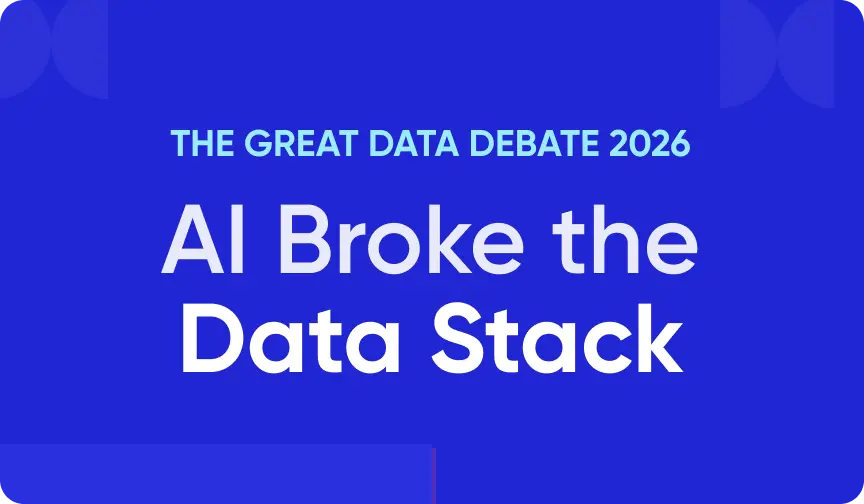How to Connect a Business Glossary Tool With Synapse?
Share this article
Ever struggled to bridge the gap between business and analytics? Discover how a business glossary tool for Synapse can effortlessly align terminology, easing the pain of communication in data-driven decision-making!
Integrating a business glossary tool with Synapse streamlines communication and decision-making in data-centric environments. The glossary standardizes business terms and definitions across the organization, enhancing clarity and reducing misunderstandings.
In tandem with Synapse’s analytics capabilities, this ensures consistent understanding and interpretation of data, leading to more accurate insights and informed decisions.
In short, this synergy enhances data accuracy and reliability, crucial for the effective use of business glossaries.
Table of contents
Permalink to “Table of contents”- Why should you use a business glossary tool with Synapse?
- Synapse overview
- What is a business glossary?
- How to implement a business glossary tool with Synapse?
- Guidelines and tips for using a business glossary tool effectively with Synapse
- Business glossary for Synapse: Related reads
Why should you use a business glossary tool with Synapse?
Permalink to “Why should you use a business glossary tool with Synapse?”Implementing a business glossary is important because:
- It ensures consistent understanding and use of data-related terms across an organization.
- Enhances data governance by standardizing data terminology and definitions.
- Improves communication and collaboration among different departments.
- Aids in decision-making processes by providing clear, agreed-upon data references.
Synapse overview
Permalink to “Synapse overview”Azure Synapse is an enterprise analytics service combining data warehousing and big data analytics. It’s limitless, offering flexible query options with serverless or dedicated resources.
What is a business glossary?
Permalink to “What is a business glossary?”A business glossary is a collection of data-related terms described in clear language for everyone in an organization to understand.
Using a business glossary tool with Synapse helps in managing and interpreting glossary terms, facilitating clearer organizational communication and decision-making. Its scalability supports evolving data needs, ensuring the glossary remains a relevant, unified data reference.
How to implement a business glossary tool with Synapse?
Permalink to “How to implement a business glossary tool with Synapse?”Implementing a business glossary tool with Synapse involves the following strategies:
1. Evaluating tools for business glossaries in a Synapse environment
Permalink to “1. Evaluating tools for business glossaries in a Synapse environment”- Compatibility: Ensure the tool integrates seamlessly with Synapse, leveraging its data warehousing and analytics capabilities.
- Scalability: Check if the tool can scale as per your data growth, aligning with Synapse’s scalability features.
- User-friendliness: Assess the ease of use for stakeholders across departments, facilitating widespread adoption.
- Customization: The tool should offer customization to suit specific organizational needs and data structures.
2. Overlooked aspects
Permalink to “2. Overlooked aspects”- Data security: Evaluate the tool’s data security features, crucial in a Synapse environment.
- Real-time updating: Capabilities for real-time updates in the glossary are often undervalued.
3. Making a business case
Permalink to “3. Making a business case”- Highlight efficiency gains: Emphasize how the tool, combined with Synapse, can streamline data governance and decision-making.
- ROI analysis: Present a cost-benefit analysis showcasing the return on investment and long-term savings.
- Risk mitigation: Outline how the tool mitigates risks associated with data misinterpretation and governance.
This strategy ensures the business glossary not only integrates well with Synapse but also adds substantial value to the organization’s data governance and analytical capabilities.
Guidelines and tips for using a business glossary tool effectively with Synapse
Permalink to “Guidelines and tips for using a business glossary tool effectively with Synapse”The common pitfalls in implementing a business glossary tool with Synapse include:
- Underestimating the need for regular updates to the glossary, leading to outdated or irrelevant data terms.
- Furthermore, if the glossary is not fully integrated into Synapse’s analytics framework, it may lead to underutilization of Synapse’s advanced data processing capabilities.
- This, in turn, hinders the full leverage of the potential for enhanced data interpretation and decision-making.
- Overlooking the importance of stakeholder engagement and training can also hinder the effective use and understanding of the glossary across the organization.
Business glossary for Synapse: Related reads
Permalink to “Business glossary for Synapse: Related reads”- Business Glossary: Definition, Examples, Responsibility & 5 Common Challenges
- Azure Synapse Analytics: Everything You Need to Know
- How to implement a business glossary
- Use a glossary to speak the same language
- Business Glossary vs. Data Catalog: Definition, Differences & Examples
- Data Dictionary vs. Business Glossary: Definitions, Examples & Why Do They Matter?
- How to Create a Business Glossary: A Step-by-Step Plan
- Business Glossary Value: How & Why It Matters
- Data Glossary & Business Metrics
Share this article





















